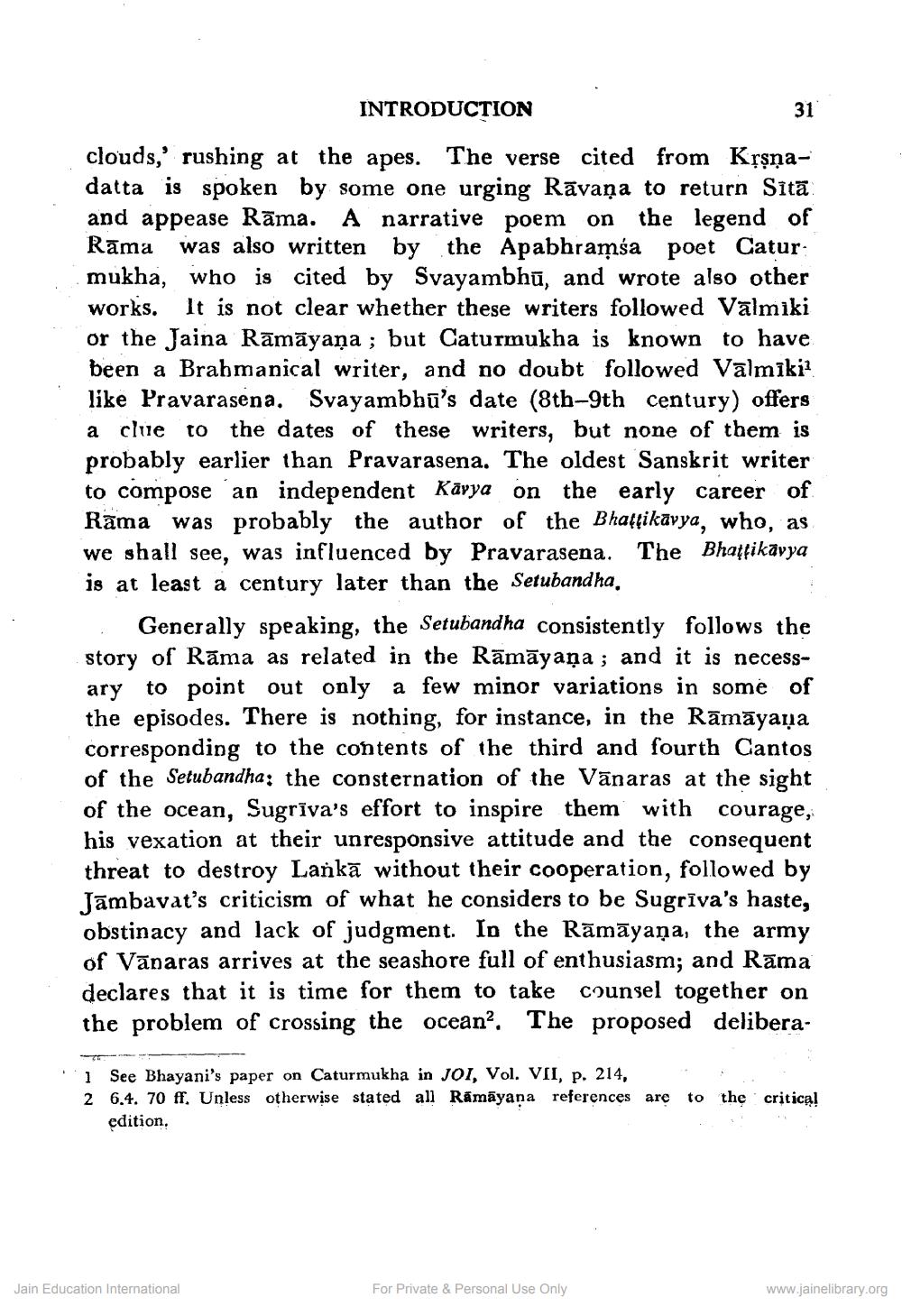________________
31
INTRODUCTION clouds,' rushing at the apes. The verse cited from Krşņadatta is spoken by some one urging Rāvaņa to return Sitā and appease Rāma. A narrative poem on the legend of Rāma was also written by the Apabhramsa poet Catur: mukha, who is cited by Svayambhū, and wrote also other works. It is not clear whether these writers followed Valmiki or the Jaina Rāmāyaṇa ; but Caturmukha is known to have been a Brahmanical writer, and no doubt followed Vālmīki? like Pravarasena. Svayambhū's date (8th-9th century) offers a clue to the dates of these writers, but none of them is probably earlier than Pravarasena. The oldest Sanskrit writer to compose an independent Karya on the early career of Rāma was probably the author of the Bhafţikavya, who, as we shall see, was influenced by Pravarasena. The Bhaffikavya is at least a century later than the Setubandha.
Generally speaking, the Setubandha consistently follows the story of Rāma as related in the Rāmāyaṇa ; and it is necessary to point out only a few minor variations in some of the episodes. There is nothing, for instance, in the Rāmāyaṇa corresponding to the contents of the third and fourth Cantos of the Setubandha: the consternation of the Vānaras at the sight of the ocean, Sugrīva's effort to inspire them with courage, his vexation at their unresponsive attitude and the consequent threat to destroy Lankā without their cooperation, followed by Jāmbayat's criticism of what he considers to be Sugrīva's haste, obstinacy and lack of judgment. In the Rāmāyaṇa, the army of Vānaras arrives at the seashore full of enthusiasm; and Rāma declares that it is time for them to take counsel together on the problem of crossing the ocean. The proposed delibera
1 See Bhayani's paper on Caturmukha in Joi, Vol. VII, p. 214, 2 6.4. 70 ff. Unless otherwise stated all Rāmāyana references are
edition,
to
the critical
Jain Education International
For Private & Personal Use Only
www.jainelibrary.org




